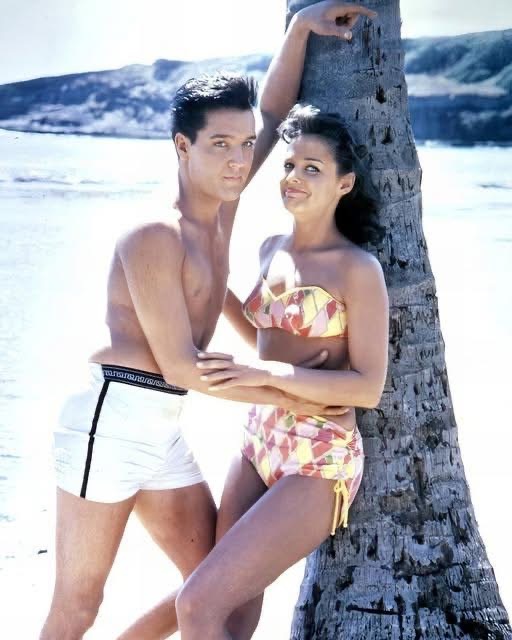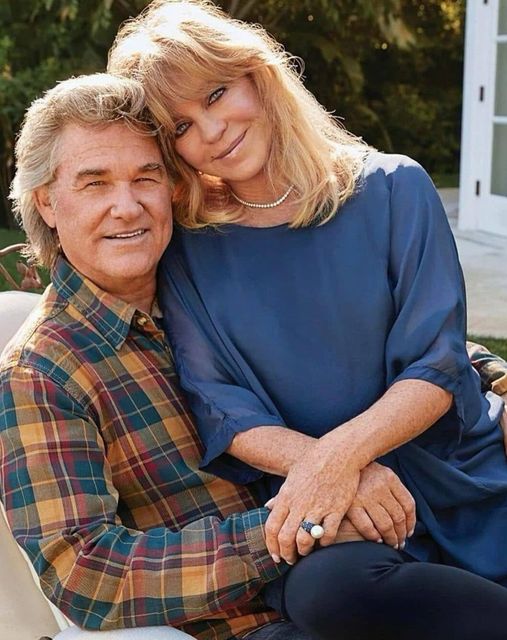Elvis Presley’s Blue Hawaii (1961) isn’t just a feast for the eyes with its sun-soaked Hawaiian scenery and unforgettable soundtrack—it’s also a treasure trove of behind-the-scenes stories and amusing bloopers that fans still talk about today. While the film may not always top critics’ lists of Elvis’s finest cinematic achievements, it has endured as a beloved fan favorite thanks to its charm, humor, and sheer feel-good energy.
The magic of Blue Hawaii lies in its combination of exotic locations, catchy songs, and lighthearted romance, a formula that would come to define much of Elvis’s film career during the 1960s. But what really makes the movie special are the funny, unexpected moments on set—the bloopers and unscripted antics that showed Elvis in a more playful, human light.
A Fresh Take on Elvis’s Movie Roles
Unlike many of his earlier films, Blue Hawaii represented a slight departure from Elvis’s typical on-screen persona. In many of his previous roles, Elvis’s characters were explicitly singers or performers. In Blue Hawaii, his character, Chad Gates, is a returning serviceman who takes a job at his family’s Hawaiian tourism business.
Despite not being a “professional performer” in the film, Chad Gates still breaks into song at the most unexpected moments. Whether he’s lounging on the beach, paddling a canoe, or chatting with local characters, Elvis would burst into melody, creating playful, musical interludes that delighted audiences. While some critics might have considered this approach cheesy, it actually enhanced the movie’s lighthearted, fun atmosphere and allowed Elvis to showcase his charm outside the traditional “performer” mold.
The Blueprint for Success
The combination of stunning Hawaiian locales, infectious music, and romance proved so popular that it became a blueprint for several Elvis films that followed. The formula was simple yet effective: show the King in exotic surroundings, give him catchy songs, sprinkle in a bit of romance, and let his natural charisma carry the story.
The film’s success also highlighted the business acumen of Elvis’s manager, Colonel Tom Parker, who recognized the commercial potential of this formula. By capitalizing on the appeal of Blue Hawaii, Parker ensured that Elvis remained a Top Ten Box-Office Star throughout much of the 1960s—an impressive feat considering the intense competition of the era.
Real-Life Fans on Set
One of the most charming details of Blue Hawaii is that some of the film’s ambiance wasn’t staged at all. In the opening scene, when Chad Gates steps off a plane in Hawaii, eagle-eyed viewers can faintly hear the sounds of real-life fans screaming in the background.
Hundreds of locals had flocked to the set, eager to catch a glimpse of Elvis. While sound editors tried to minimize the noise, the enthusiasm of the crowd was impossible to completely mask, adding an authentic sense of excitement and celebrity buzz that few films can replicate. These spontaneous reactions contributed to the energy of the movie and gave audiences a taste of the real Elvis phenomenon in Hawaii.
Iconic Songs and Unexpected Musical Moments
While Blue Hawaii isn’t strictly a musical in the traditional sense, music flows naturally through almost every scene. Songs like “Can’t Help Falling in Love” and “Blue Hawaii” have since become iconic, but many of the on-set musical moments were unscripted or improvised.
During some filming sequences, Elvis would ad-lib lines or change the melody slightly, creating funny or unexpected moments that delighted both the crew and the cast. These spontaneous musical moments often made it into the final cut, giving the film a lively, unpredictable charm.
Memorable On-Set Bloopers
Behind every carefully edited scene, there were plenty of funny mishaps and bloopers that fans didn’t get to see in theaters. For example:
- Beach Scenes: In several sequences filmed on Hawaiian beaches, Elvis’s co-stars would struggle to keep a straight face as he faked wipeouts in the surf or playfully chased birds along the shoreline.
- Canoe Scenes: While paddling a canoe in one sequence, Elvis accidentally splashed the camera crew multiple times, creating genuine laughter that had to be reshot several times.
- Improvised Lines: Some dialogue between Elvis and co-star Joan Blackman was ad-libbed, leading to funny exchanges and charmingly awkward reactions that made it into the final film.
These bloopers reveal a more playful, human side of Elvis, contrasting with the polished, perfect image audiences often associate with the King of Rock ‘n’ Roll.
The Legacy of Blue Hawaii
Despite its lighthearted tone and occasional goofiness, Blue Hawaii left a lasting legacy for both Elvis and Hollywood. The film demonstrated that:
- Location can be a star: The Hawaiian setting wasn’t just a backdrop; it became a central character in the story, enhancing the romance, humor, and visual appeal of the movie.
- Charisma trumps plot: Even when the story is simple, Elvis’s charm, energy, and personality kept audiences engaged.
- Bloopers add authenticity: Funny behind-the-scenes moments made the movie more relatable and enjoyable for viewers.
By blending these elements, Blue Hawaii became a template for countless Elvis films that followed, many of which featured similar exotic settings, lighthearted plots, and musical interludes.
Fun Facts Fans Might Not Know
- Elvis Almost Didn’t Film in Hawaii: Studio executives originally debated whether the location shoot would be worth the cost, but Elvis insisted, understanding the appeal of the tropical scenery.
- Real Locals Were Extras: Hundreds of Hawaiian residents were used as background extras, adding authenticity and energy to the scenes.
- Cameos and Improvisation: Many small, improvised interactions between Elvis and locals made it into the final film, capturing candid reactions that can’t be replicated in scripted scenes.
- Impact on Pop Culture: Songs from Blue Hawaii remain some of Elvis’s most enduring hits, covered and celebrated by artists decades later.
Why Fans Still Love Blue Hawaii
Even today, more than six decades later, Blue Hawaii remains beloved for several reasons:
- Nostalgia: It captures the carefree, sunny optimism of early 1960s Hawaii.
- Elvis’s Charm: The King’s playful personality shines through in every scene.
- Musical Magic: Iconic songs like “Can’t Help Falling in Love” are timeless.
- Behind-the-Scenes Humor: Stories of bloopers, ad-libs, and on-set antics make fans feel closer to Elvis as a person, not just a performer.
Lessons from Blue Hawaii for Modern Filmmakers
Modern filmmakers can still learn a lot from Blue Hawaii:
- Choose Locations Wisely: Exotic, beautiful settings can enhance the story and captivate audiences.
- Let Stars Shine Naturally: Giving actors room to improvise can lead to memorable moments.
- Blend Humor with Charm: Lighthearted bloopers or unscripted moments can increase a film’s relatability.
- Music Matters: Well-placed songs can elevate the story and make scenes unforgettable.
Conclusion: Elvis, Humor, and the Enduring Appeal
Blue Hawaii may not be hailed as the most critically acclaimed Elvis film, but its enduring charm lies in its sunny backdrop, irresistible music, and playful on-set humor. Behind the polished sequences, Elvis’s laughter, improvisation, and genuine interactions with his co-stars and locals created moments that fans still cherish today.
The film captures the essence of Elvis Presley—not just as the King of Rock ‘n’ Roll, but as a charismatic, playful entertainer whose charm could brighten any scene. The bloopers, behind-the-scenes antics, and musical surprises remind us that even legends have fun on set—and sometimes, those unscripted moments are the most memorable of all.
Whether you’re watching Blue Hawaii for its music, its tropical setting, or its hilarious on-set stories, one thing is clear: Elvis’s charisma, humor, and talent continue to shine, decades after the cameras stopped rolling.




